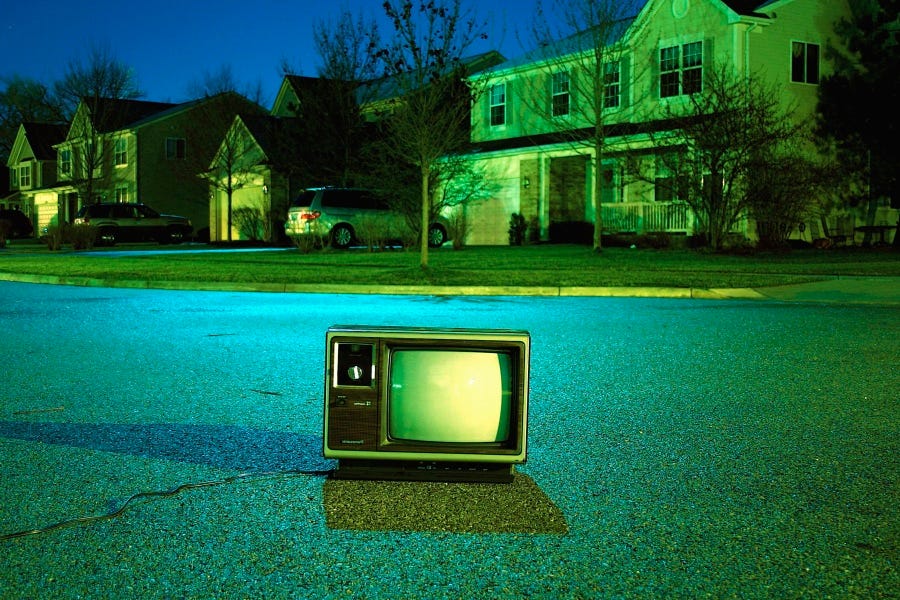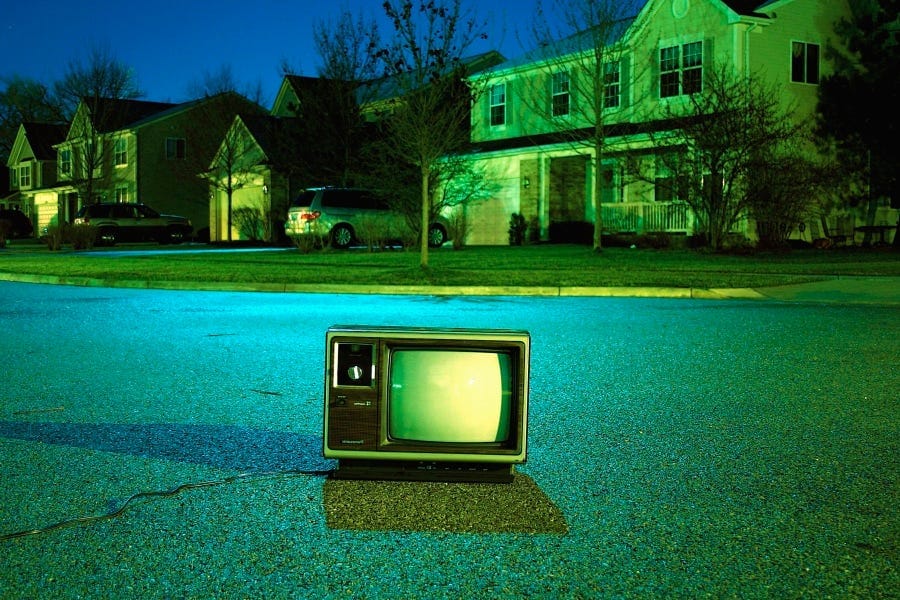
When I was younger, I was very similar to Carl Lewis. Athletes at their peak. Two runners, both sprinting at full pace, a perfect balance of focus and determination. OK, he was racing away to secure Olympic gold, and I was running home to watch Scooby Doo, but as I said, very similar. Because that’s what I had to do at that time: finish school, casually walk out the gate and then sprint for home as if my shoes were on fire. Those meddling kids were on at 4:00 p.m. No DVR, no catch-up TV, not even a video recorder. The clock was ticking. Make it home on time to watch it, or during the next day, when everyone was discussing which villain had been dressing up as a monster in an abandoned fun fair, I wouldn’t know what to say.
That instant gratification we crave in modern life — even waiting for two minutes for the microwave feels torturous — now applies to TV.
I remember thinking to myself, with wet clothes clinging to my body, as I wiped away the sweat and tried to catch my breath, that the last thing I wanted to look like was an idiot.
TV at that time was like a begging child: “Watch me now! Watch me now!” Sure, VHS did arrive to resolve this problem, but little changed. The whole process of finding an empty tape and trying to work out how to program the timer was so complicated, even rocket scientists agreed it was easier to just cancel all social plans instead. Yes, look, I’m sorry, Charlotte. I know it’s your birthday, and I should be there, but Dallas is on soon, and this video recorder hates me.
All those problems are gone now. We have DVRs, on-demand TV and catch-up services. That instant gratification we crave in modern life — even waiting for two minutes for the microwave feels torturous — now applies to TV. We have it all at our fingertips so we can have the best of both worlds: still watch what we want to and turn up to watch your friend blow out some candles. Perfect.
It makes no sense. I am hopelessly looking for something to watch when there is everything to watch.
So I signed up for Netflix last year. The possibilities felt colossal, almost endless. Movies? Here’s a thousand of them. Classic and independent films? We got you. Foreign movies and sequels you didn’t even know existed (hello, Titanic 2!)? Come this way. Comedies, thrillers, westerns, horror movies, sci-fi? Oh yeah. Rob Schneider movies? No, come on; we draw the line somewhere.
Oh, and here’s every season of every TV show you’ve ever heard of in your whole life, plus a few hundred you haven’t.
So I’d always have something to watch. Always. Yet despite all those choices, I still find myself drawn to regular TV. Despite Netflix offering variety, flexibility and a lack of interruptions, I still end up scrolling through TV channels like an ex-smoker absentmindedly picking up a pack of cigarettes. It makes no sense: I am hopelessly looking for something to watch when there is everything to watch.
Sometimes I even sit through commercials, thinking I should probably switch over to Netflix—and wow, that washing powder really does get those stains out.
There’s something that still appeals about TV surfing. Flicking through the channels before stumbling on something good is so rewarding, like suddenly finding a $10 bill in your jacket pocket.
The other night, after scrolling through TV channels, I ended up watching Jaws (I was choking on some chips at the time, and I recall hoping that if I died, the media would be at least kind enough to describe it as “surfer comes face to face with a shark”).
In a world where everyone is more joined up than ever before through social media and instant messaging, our TV viewing has become more disjointed and individual.
But why did I watch it? It’s a movie I’ve seen countless times. But despite it being late, I knew I had to stay right to the end just to see Roy Scheider and Richard Dreyfuss paddling and kicking their way back to shore. I could have opened up Netflix, found that movie and watched it at a convenient time. I could have, but I’m more likely to be eaten by an actual shark.
Why do I do this? Why do I return to traditional TV time and time again? I guess old habits die hard, but part of it is that I miss water-cooler TV, whereby people would gather in offices the following day and discuss the latest episode of a particular show — because we had all watched it at the same time. I miss the shared enjoyment, the reactions, the discussions and the theories about what will happen next. Try the same thing with a Netflix show you’ve recently discovered and want to talk about and share. Immediately, Jane from finance will yell across the room not to bother because she found it boring; Jim will instantly inform you that he has already watched all four seasons and claim it’s excellent, except it tails off in season 3; Rachel will declare that she gave up after season 2; and Carl will announce that he was astonished when it turned out that the sister did it—but oh, wait, have you seen that bit yet?
In a world where everyone is more joined up than ever before through social media and instant messaging, our TV viewing has become more disjointed and individual. The only time we enjoy TV shows at the same time are the very biggest shows. They transcend the idea that you can watch it at your leisure. It used to be Breaking Bad. Now it’s Game of Thrones and perhaps Stranger Things. You have to watch each episode straightaway; otherwise, you’ll be sticking your fingers in your ears around the water cooler the next morning, and will somehow have to avoid Carl all day.
I hope that trend continues. It would be great to discuss TV shows again as they happen, rather than conversations being awkward as people try to avoid spoilers by cagily asking at what point you are in a show. Anyway, I need to stop now. The Shawshank Redemption has just started on HBO.
Hey! The Bold Italic recently launched a podcast, This Is Your Life in Silicon Valley. Check out the full season or listen to the episode below featuring Aarti Shahani, technology reporter at NPR. More coming soon, so stay tuned!







